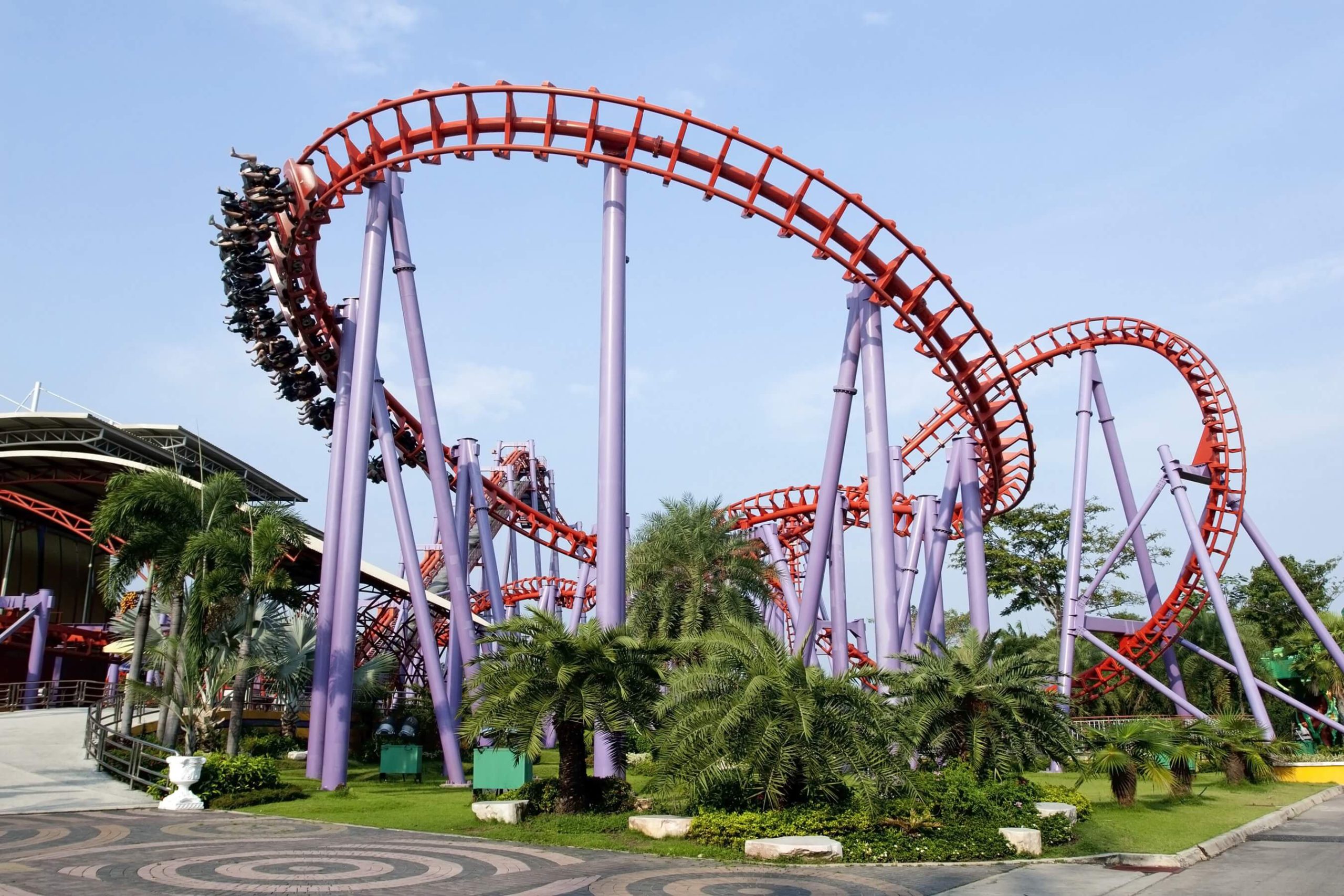Uses of Digital Signage in Amusement Parks
Technology in amusement parks is revolutionizing not only the rides but the way guests experience the park too. As rides grow bigger, faster and more daring, amusement parks become more packed and clear communication becomes even more important.

Digital signage has proven to be a great visual communication tool. Amusement parks are increasingly implementing the technology to create great guest experiences and improve park efficiency.
Here are the top 9 ways modern parks are using this technology on a daily basis:
Manage Perceived Wait Times
Using digital signage to reduce perceived wait times is arguably the most practical application of signage solutions.
Many studies have shown that customers tend to overestimate the time they have spent waiting. Which only serves to exacerbate their impatience. This can lead to line-cutting and crowd problems, which are two of the biggest complaints at amusement parks.
Digital signage alleviates all these problems by providing engaging and informative content as guests wait in line. Content can include park related videos, music videos, themed trivia, and even estimated wait times. Digital signage gives guests something entertaining to look at which creates a better waiting experience.
Wayfinding
Another practical and important use of digital signage in amusement parks is wayfinding.
More so than any other solution, digital signs allow parks to easily communicate directions with large crowds of people trying to navigate a sprawling park.
Digital signage streamlines this process. It providing helpful visual cues that improve the guest experience. As well as creating a more natural traffic flow and reducing safety concerns.
The experts agree that when people have a pleasant experience finding their way around an unfamiliar place, they are more likely to visit that location again.

Streamline Marketing
One of the most important advantages of digital signage is its ease to customize and update. With digital signage, parks don’t have to spend money printing and distributing flyers and other materials that are only relevant for a limited amount of time.
Digital signage in amusement parks can be easily customized and updated to advertise special events throughout the year. A great example is holidays such as Memorial Day and Labor Day. These are some of the busiest times of the year at amusement parks. Digital signage allows parks to capitalize on this surge in attendance. While simultaneously, creating a festive mood and actively engaging with guests throughout their visit.
Colors, fonts and other visual cues play a big part in how we perceive and interact with the world. By making the most of these tools, parks can make holidays feel even more special and magical.
The ability to automate a certain amount of marketing work also allows employees to operate more efficiently and turn over smaller tasks to digital signage. This means that the park’s marketing team can free up time to focus on other tasks.
Promote Concession Stands and Gift Shops
Ticket sales are certainly a big source of revenue for amusement parks. But concession stands and gift shops are also important to driving profits. Strategically placing digital signs throughout the park helps promote concession stands and gift shops, and generate excitement over souvenirs.
Interestingly, while majority of people visit the park just for the day, 27% of guests stay overnight, which presents a significant opportunity to upsell in-park amenities.
Promote New Rides and Attractions
Unlike static signs that come with limitations, digital signage is a dynamic display solution that allows parks to regularly or instantly change content.
This makes them the ideal forum for creating excitement about new rides and attractions.
Videos are used to provide a preview of the guest experience and build hype and energy that translates into more tickets sales.

Display Height and Safety Requirements
Another way to reduce wait times is to make sure that guests are prepared to board the ride once they reach the front of the line.
The last thing you want is for people to be turned away because they don’t meet the height requirement or they aren’t wearing the right type of shoes. Not only will this create frustration, it will also slow down the line and affect other guests.
Digital signs eliminate this problem and speed up wait times by making sure that everyone is aware of procedures from the moment they get in line.

Generate Additional Revenue: Ad Space
Business savvy amusement parks are also increasing profits by selling advertising space on their digital displays to companies that share a similar audience.
Serving targeted ads not only brings in additional revenue, it also provides relevant content that engages guests and speaks directly to their needs and interests.
Partnering with other businesses and engaging in cross promotional campaigns is a vital part of any marketing strategy. The fact that digital signs allows parks to earn ad revenue while also networking with other businesses, makes them an invaluable tool.
Reinforce Branding with Consistency
One of the challenges parks face is creating a cohesive experience that reflects and reinforces their brand. Especially since there are so many different rides and attractions spread across dozens of acres of land.
Digital signage solves this problem by providing visual cues. These cues draw virtual threads among far-flung areas of the park and subtlety reinforce branding, which also helps to build customer trust and loyalty.
Communicate Weather Forecasts
The typical amusement park has over 12 acres of outdoor space. Which means, guests spend most of their time at the mercy of weather elements. Digital signage in amusement parks is the perfect tool to help guests. For example, to plan their visit around changing weather conditions and make sure that they can hit their favorite rides before rain puts a damper on the day.
Updating weather information also serves as an important safety tool, allowing parks to notify large numbers of people about the dangerous weather before it hits.
Amusement parks face a specific set of challenges that digital signs are uniquely positioned to address. For example, managing large crowds spread over an expansive area, while also providing a personalized and enjoyable guest experience. This is certainly a tall order. Digital signage in amusement parks provides a dynamic solution to these problems.
Ultimately, the use of digital signage in amusement parks is one of the most cost-effective and efficient way to streamline complicated processes. Furthermore, improving the guest experience and increasing revenue.



